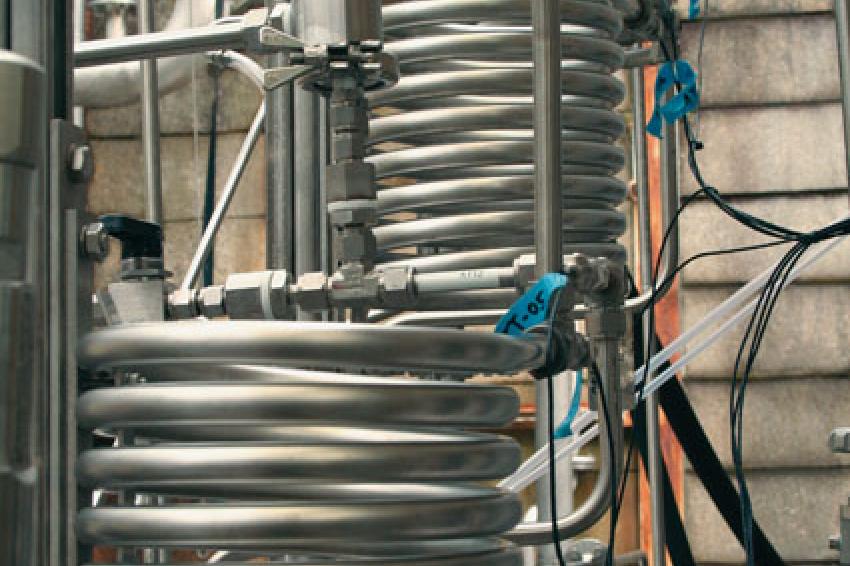Flow Chemistry for Hazardous Reactions
Does Converting From Batch Processing Make Sense?
Magic Pill? - The kick to expand flow chemistry into new application areas is a hot topic in chemistry and pharma. Driven by the vision of highly efficient processing, reputable players put enormous efforts into converting existing and new processes from batch to flow. Indisputably, the flow process has a potential but is it the pill to cure all headaches?
Chemistry Between Flow and Batch
Continuous processes are work horses in the production of commodities such as petro and industrial bulk chemicals. These industries developed and fine-tuned highly efficient processes on continuous equipment to fulfill the steady and high demand for their products. Production facilities are often dedicated mono plants, optimized for high throughput based on full automation and high plant utilization. In contrast, fine chemical companies are using batch processes because of their customized and complex products, smaller and fluctuating volumes and specialized applications. For CMOs, flexibility is the key in manufacture a large variety of sophisticated, often exclusive products on existing batch equipment.
Flow Chemistry Is ‘En Vogue'
Past years have shown trends towards continuous processing in fine chemical and even pharmaceutical industries. The continuous approach becomes more attractive as a concept to overcome the lag of R&D productivity and to address price pressure in the pharmaceutical industry. Hence, many pharmaceutical companies have recently established their own flow chemistry research groups to gain more knowledge and investigate cost-effective production of intermediates up to active pharmaceutical ingredients (APIs) under Good Manufacturing Practice (GMP) requirements.
Fit For Flow
Flow reactors are preferably used for reactions with fast kinetics and hazardous reactions in order to keep the critical volumes small. Fast reactions are often highly exothermic due to the use of highly reactive and toxic reagents or the formation of unstable compounds. The continuous mode is a superior approach for the safe performance of hazardous reactions. Additionally, reactions with selectivity issues are candidates for flow chemistry due to the accurate control of the more narrow temperature profile in a flow system.
Size Matters
Micro-reaction technology featuring high heat and mass transfer characteristics appears to be the tool to meet the "fit for flow" requirements. Many companies invested in this new technology, developed new equipment and run various types of chemistry with such devices. Today, the micro-reaction technology is well established, predominantly in research and development as a convenient lab tool for screening different reaction conditions and producing first quantities of product within short time. In the meantime, the dimensions of the micro reactors were increased to millimeter scale to avoid clogging and some other disadvantages of the micro reactors. Although there are few examples of micro-reactor applications for industrial manufacture of products, the micro-reaction technology still has to demonstrate its relevance next to the tubular flow reactors in an industrial environment.
Different Development Approach
Development of continuous processes requires a different mindset of the development chemists. Traditionally trained in running batch processes, a change to a more chemical engineer's view is needed. The chemical process is normally adjusted to fit the technical plant requirements. In contrast, a continuous process needs dedicated equipment that is specifically designed for optimal chemical conditions. More drastic reaction conditions (e.g. higher reaction temperature, solvent-free processes etc.) can be realized even for hazardous reactions and run safely in continuous equipment due to the precise process control.
The intensive interaction of development chemists and engineers from the beginning is the key success factor in designing effective flow processes. Initial tests are needed first to generate fundamental process data on kinetic and thermodynamics for basic equipment design. Here, micro reactors offer support as lab tools. In special cases, laboratory scale continuous stirred tank reactors (CSTR) deliver the basis for further optimization and calculations towards the final flow equipment. For fast and highly exothermic (hazardous) reactions "one shot" experiments can give relevant results on the feasibility of process transfer to flow reactors.
Batch Vs. Continuous
In principle, many reactions can be run continuously. The key question is if there is any economic benefit. Time and effort needed to establish a continuous process is often underestimated. In many cases, it is the reaction part that is developed to be run under continuous conditions. In order to get an economic benefit at the end, continuous processes must also take the option into account to continuously quench, work-up, extract and isolate the product.
The initial efforts for design, engineering and realization of a process in continuous equipment are high, and an investment in appropriate equipment and manpower is significant. For economic reasons, many processes remain batch processes, although they fulfill all other criteria for continuous manufacture. As long as the quantities are reasonably manageable and the process can be run safely and without quality issues, the realization as a traditional batch process is still a competitive more cost-effective alternative. However, in case of a significant increase of demand, the situation has to be reviewed again and a continuous solution may be preferable despite additional investment costs.
Equipment requirements for continuous manufacturing are high. A significant number of supporting equipment like feed or receiving tanks, heating/cooling units as well as pumps and control systems are needed. With a modular approach, most parts of the equipment can be used in different configurations. There are concepts for multiple usage of continuous equipment to reduce the initial hurdles. Nevertheless a combination of a basic modular tool box of equipment with well experienced people in R&D and engineering is an essential prerequisite for a fast and reliable realization of continuous processes as services for third parties, such as Dottikon ES offers.
Contact
Dottikon Exclusive Synthesis AG
Hembrunnstr. 17
5605 Dottikon
Switzerland








